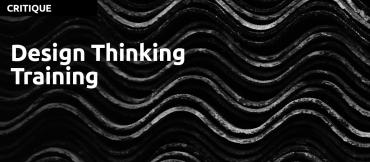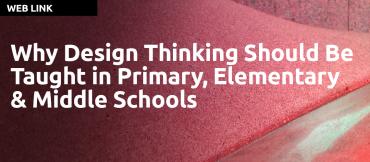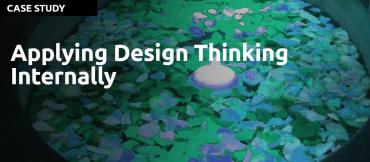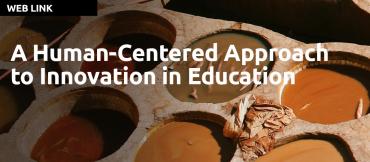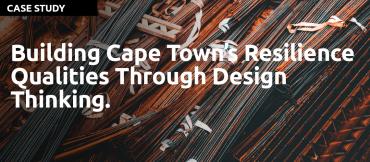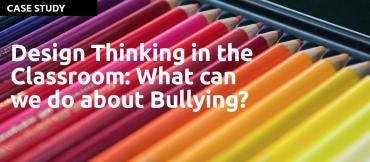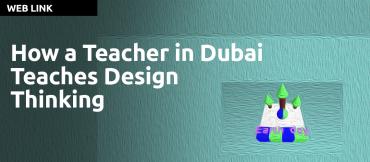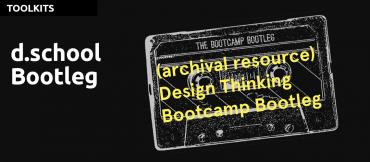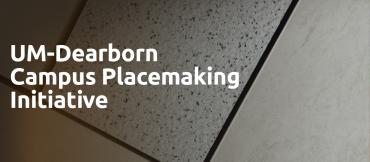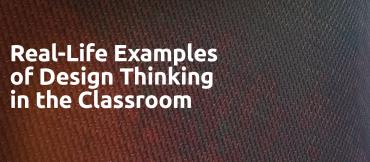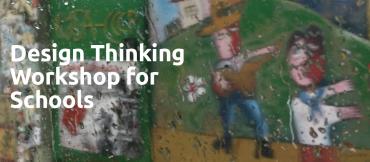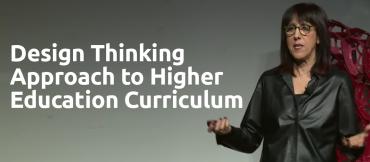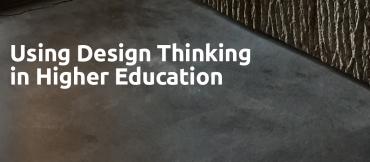Design Thinking has been widely recognized as an alternative way of thinking and methodology for problem solving in Education institutions from K-12 to Grad Schools in educational institutions such as Stanford, MIT, Darden School of Business at Virginia University, Carnegie Mellon and many more. Read about their courses, programs, research and other involvement with design thinking on this page.
See our listing of courses and programs offered by all Universities and other institutions on the Education page.
This is a follow on article to our original article "5 Design Thinking Examples for Students".
What are Design Thinking Tools? Design thinking is an approach to problem-solving that is centered around understanding the needs and experiences of end-users. It is a creative and innovative approach that is used by designers and organizations to develop effective solutions to complex problems. Design thinking tools are a set of methods and techniques that facilitate the design thinking process. In this article, we will discuss some of the most popular design thinking tools and their benefits.
1. Empathy Mapping
Design thinking training has become increasingly popular in recent years, with businesses and organizations around the world looking to develop their innovation and problem-solving capabilities. While design thinking can be a powerful tool for creativity and innovation, there are also some potential pitfalls and limitations to its use. In this article, we will critically examine design thinking training, looking at its strengths and weaknesses, and providing recommendations for how to make the most of this approach.
Design thinking has emerged as one of the most popular frameworks for creative problem-solving. It has been used by businesses, startups, and non-profits around the world to develop innovative solutions to complex challenges. As a result, the demand for design thinking certification has increased significantly. However, the question remains, is design thinking certification necessary, and does it truly add value to the process of design thinking?
Welcome to our educators page. We hope that we can support you on your journey to discover and use Design Thinking to help the next generation to become more confident in using creativity to solve problems.
Why is Design Thinking important for students?
In 2022 India became the first country to offer Design Thinking as an option at K9-12 high schools. Design can be difficult to introduce in schools as it diverges from traditional classroom concepts. The evaluation process involves studying the learning process, portfolios or exhibits created by the student rather than exams. Each learner would produce a unique portfolio as an outcome whereas traditional education generates identical answers.
21st Century Learning and Innovation Skills are the skills that will be essential for students to possess to thrive in the increasingly complex life and work environments in the 21st century. These include:
• Creativity and Innovation
• Critical Thinking and Problem Solving
• Communication
• Collaboration
Applying Design Thinking internally, within a group, community or to ourselves. This is a new application of the Design Thinking Methodology.
An internal application in this sense can have two meanings. First, the internal application of design thinking tactics within a group, organization or community, and second, the internal application of design thinking to one’s own self and life.
Can Design Thinking help you solve your own problems?
Talk to any educator, parent, or policy maker and you will inevitably hear about the many problems that exist in education. It’s not for lack of trying—millions of people are working across the country to find new solutions for our schools. And yet we’re struggling to find new answers that make a real
difference.
Recently IDEO, the design and innovation firm where I work, collaborated with San Francisco Unified School District to develop a new vision for their food
system.
This case study focuses on a Design Thinking Workshop for primary school learners. The aim of the workshops was to provide learners with a new set of skills which they can employ when problem solving for real world challenges.
Building resilience is essential for cities that face increasing uncertainty and new challenges that threaten the well-being of its citizens. This is especially important when looking at the diversity and complexity of potential shocks and stresses.
This study shows that a short, 3-day intervention can make a positive impact on young female youths’ perceptions of STEM, pro-social attitudes, creative confidence, and career pathways. It does this by creating a “hook” or stimulating interest among youths to have a more favorable opinion about working in STEM.
The study’s second finding is that persistent gender norms are hard to overturn and require additional interventions.
This very informative article discusses design thinking as a process and mindset for collaboratively finding solutions for wicked problems in a variety of educational settings. Through a systematic literature review the article organizes case studies, reports, theoretical reflections, and other scholarly work to enhance our understanding of the purposes, contexts, benefits, limitations, affordances, constraints, effects and outcomes of design thinking in education.
Specifically, the review pursues four questions:
As children move from kindergarten, through middle school, and to high school, instruction shifts from stories to facts, from speculation to specifics, and imagination fades from focus. Design Thinking provides an alternative model to traditional ways of learning academic content by challenging students to find answers to complex, nuanced problems with multiple solutions and by fostering students’ ability to act as change agents.
In her doctoral paper Loraine Rossi de Campos explores the use of Design Thinking in a school district for a 4-5 grade school.
How to use design thinking to make great things actually happen by Tim Brown and Roger L. Martin. In this great HBR article, the authors look at design thinking in Finance with two case studies, one from MassMutual and the other from Intercorp. Group of Peru.
In this article highlighting the development of the acceptance of Design Thinking, they discuss how Design Thinking helps to create the artifact that creates the new solution as well as the intervention/s that brings the artifact to life.
Ever since it became clear that smart design led to the success of many products, companies have been employing it in other areas, from customer experiences, to strategy, to business ecosystems. But as design is used in increasingly complex contexts, a new hurdle has emerged: gaining acceptance (for the new solutions).
Reham has been working at Mohammed bin Rashid school, a public school in Dubai, for the last five years as a Design & Technology Teacher. She teaches grades 3 to grade 8 students. Prior to working as a teacher, Reham was an architect and worked at an engineering consultancy where her duties included designing buildings using Autocad and 3d Max software.
In an ever changing society of the 21st century, there is a demand to equip students with meta competences going beyond cognitive knowledge. Education, therefore, needs a transition from transferring knowledge to developing individual potentials with the help of constructivist learning. A Scheer, C Noweski, C Meinel, University of Potsdam, Germany.
Design Thinking is the most effective method of teaching constructivist learning.
Developing environmental sustainability strategies, the Double Diamond method of LCA and design thinking: a case study from aged care. Journal of Cleaner Production, 85, 67-82. Stephen J. Clune*, Simon Lockrey.
The Stanford University d.school - Design Thinking Bootcamp Bootleg, Design Thinking tools and the Resources page. have gone through a number of iterations to refine the exercises and tools. The Bootleg offers the latest version (as of May 2020) for people to download and use for free.
Watch this video from Nathan Shedroff on design strategy and the merging of business and design. In this video Nathan very clearly articulates the difference between design and design thinking and discusses how design needs to mesh with business and business with design. Well worth watching.
Admissions needs to communicate consistently at each touchpoint. Prospective students and families want to assess whether this educational experience is the right fit for them. Current students and alumni are asking for Maize and Blue landmarks to build the Michigan Tradition across campus.
Design Thinking is a powerful approach to problem solving and supports schools in moving toward a more hands-and minds-on, challenge-based curriculum. We want kids to be engaged right? You won't believe how well Design Thinking engages kids.
Design Thinking in daily life is about creating creative and collaborative workflows engineered to tackle big projects and prototyping to discover new solutions.
And although we have K-12 schools incorporating design thinking into their curriculum and instruction, as well as educators attending design thinking workshops at places like the d. School at Stanford, what does design thinking in daily life really look like in K-12 classrooms and schools?
If we want our students to think critically, consider the needs of others and then develop solutions to solve real problems, design thinking project ideas offer a useful framework to make that happen. Are you looking to give it a try this year? Here are 6 design thinking project ideas that take students through the 5 stages – empathize, define, ideate, prototype and test – and get them digging deeper.
This video showcases three projects during this year’s Design Thinking Club. Each group of students used the design thinking method to help improve a school experience or help a teacher in need.
David Lee walks us through three Design Thinking projects. It's a great example of how the process works and the type of results that it produced.
Watch the kids go through the process and produce really great solutions. It is inspiring.
In this presentation from the Hathaway Brown School in Ohio, teachers will learn about the design thinking process, how it ties to the 21st century skills and how to conduct workshops for different grades. It provides a good overview for teachers who want to try Design Thinking in their classroom.
There are not that many Design Thinking project examples for students on the web. Most design thinking project examples are aimed at working professionals i.e. engineers, marketing, business people, and are not really great project examples for K-12 and college students to grasp how the process works. Nor is it easy to understand how they apply to your particular problem or passion.
The Stanford d.school's Design Thinking Workshop is a powerful tool for developing innovative solutions to complex problems. The workshop combines empathy, creativity, and critical thinking to develop unique and effective solutions to a wide range of problems. This article will explore the how long the workshop should take, and some tips and tools to ensure a successful Design Thinking Workshop.
How Long Should the Workshop Take?
The way we are educating students is not the way that they will have to work to succeed in the world. When last did you see students working together in teams and collaborating on problem solving? Education is an individual pursuit in a world that needs team thinking and collaborative skills.
Too often, we hear students say they want to leave West Virginia because there are limited opportunities and few things to do. Simulated Workplace Entrepreneurship Education Pathway (SWEEP) turns that notion on its head and empowers students to generate and create those opportunities
Design Thinking is a creative process that helps you design meaningful solutions to problems in the classroom, at your school, and in your community. This Design Thinking toolkit and Designer's Workbook provides you with instructions to explore Design Thinking with your students. Using the Design Thinking toolkit will help you to get your students engaged in the classroom in ways that are hard to achieve through other exercises.
Design thinking offers a creative yet structured approach for addressing large-scale challenges.
We offer a summary of the webinar, Design Thinking: Education Edition, which discusses design thinking principles and process, describes real-world examples of design thinking in action, and offeres possibilities for how you might introduce the approach into your own organization.




